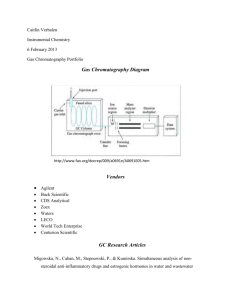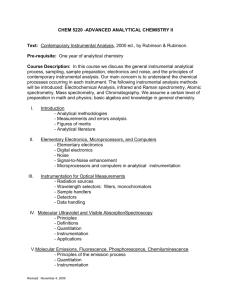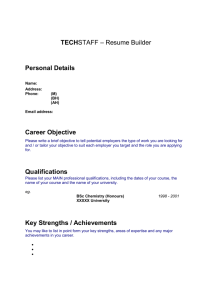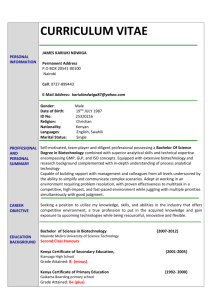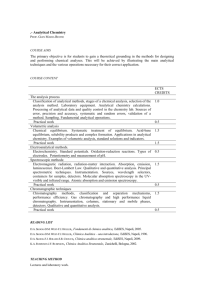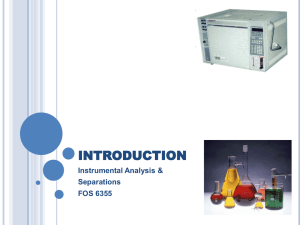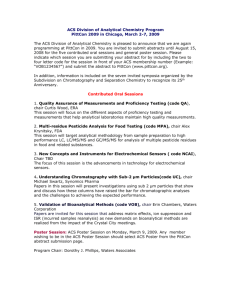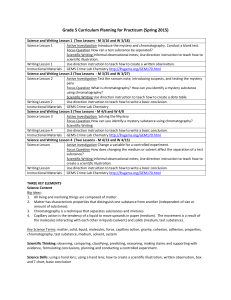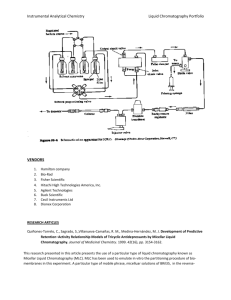CH-507 Advanced Analytical Chemistry
advertisement
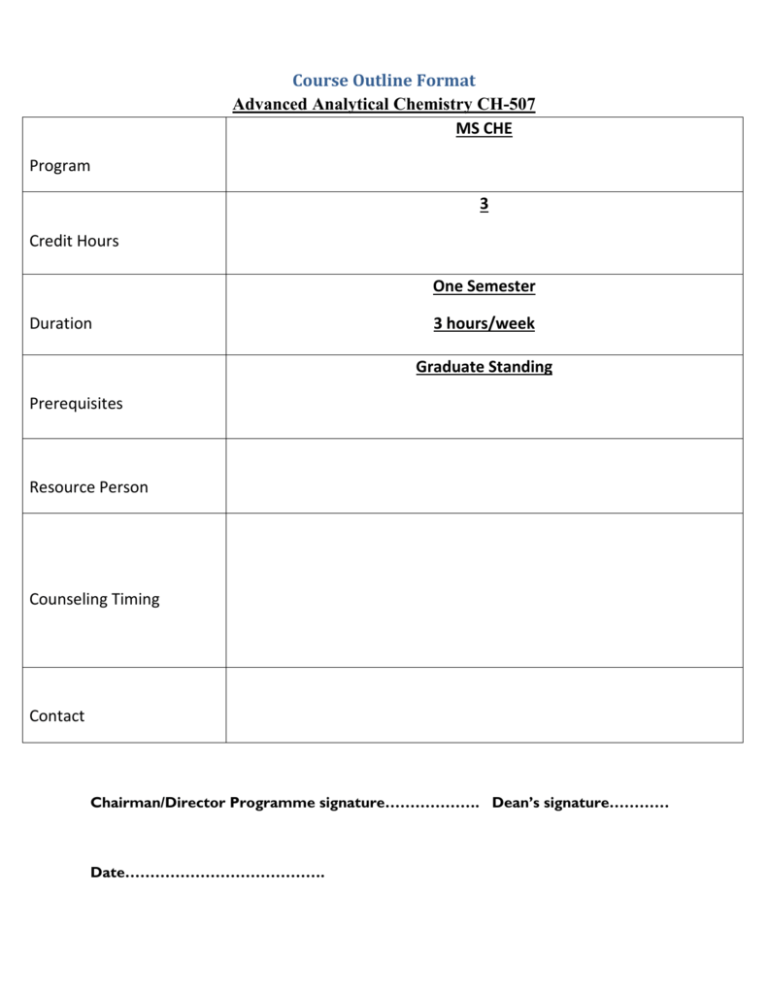
Course Outline Format Advanced Analytical Chemistry CH-507 MS CHE Program 3 Credit Hours One Semester Duration 3 hours/week Graduate Standing Prerequisites Resource Person Counseling Timing Contact Chairman/Director Programme signature………………. Dean’s signature………… Date…………………………………. Learning Objective Credit Hours:3 Resource Person: Semester:Spring 2015 Objective: The course objective is to introduce the participants to modern instrumental techniques and analytical approaches. After completing the course the student should be able to: Learn about sample extraction and sample preparation techniques. Develop and validate methods for separating compounds and determine their concentration. Identify unknown compounds by modern instrumental techniques. Evaluate and discuss analytical chemical data. Do problem solving in analytical chemistry Syllabus: Described in lecture schedule Learning Methodology Grade Evaluation Criteria Marks Evaluation Marks in percentage Quizzes+Assignments 20% Mid Term 25% Attendance & Class Participation 0% Term Project 10% Presentations 10% Final exam 35% Total 100% Recommended Books Christian, G.D.,Analytical Chemistry,6th ed., John-Wiley & Sons, (2004). Skoog, D.A., West, P.M., Holler, F.J. and Crouch, S. R., Fundamentals of Analytical Chemistry, 8th ed., Brooks/Cole Nelson. (2007) Harvey, D., Modern Analytical Chemistry, 2nd ed., McGraw Hill Ltd., (2009) Reference Books • Grob, R. L., Eugene, F. Barry, Modern Practice of Gas Chromatography, 4th ed., John-Wiley & Sons, USA, (2004). • Lindsay, S., High Performance Liquid Chromatography, 2nd ed., John-Wiley & Sons, Ltd., (1992). • Sharma, B.K. Instrumental Methods of Chemical Analysis, 24th ed., Goel Publishing House, Meerut, India, (2005). Calendar of Course contents to be covered during semester Week TOPICS 1 Introduction to analytical chemistry: Choice of analytical methodology, Errors, Accuracy and precision, Average derivation and standard derivation, variance and confidence limit, Significance figures and computation rules 2 Extraction methods: Liquid-liquid extraction, Solid phase extraction, Super-critical fluid extraction and Accelerated solvent extraction, Fractionation methods. 3 Methods of sampling: Samples size. Techniques of sampling, Sample preparation, Chemical analysis, Tools for quantitative chemical analysis, Quality assurance. 4 Chromatographic Methods: General principle, Classification, Nature of partition forces, Column efficiency and resolution. 5 Thin Layer Chromatography (TLC): Coating of materials, Preparative TLC. Solvents used and methods of detection, Applications. 6 Column Chromatography: Adsorption and Partition methods, Nature of column materials, Preparation of the column, Solvent systems and Detection, Applications. 7 High Performance Liquid Chromatography (HPLC): Sample injection, Nature of columns, Solvent systems and Detectors, Optimization, Use of standards, Liquid Chromatography Mass Spectrometry (LC-MS), Applications. 8 Gas Chromatography: Sample injection, Nature of columns, Optimization of experimental conditions, Gas Solvents, Columns, Gas Chromatography Mass Spectrometry (GC-MS), Applications. 9 MID TERM 10 Mass Spectrometer: Principle, Working, Formation of different types of Ions, Fragmentation of organic compounds, Applications. 11 Ultraviolet and Visible spectrophotometry (UV-VIS): Beer Lambert’s law, Instrumentation, Calculation of absorption maxima, Applications. 12 Infrared Spectroscopy (IR): Principle, instrumentation, sampling technique, selection rules, absorption of common functional groups. Factors affecting frequencies, Applications 13 Capillary Electrophoresis (CE): Electrophoresis, Theory and principle of CE, mobility, electro-osmotic flow separation by CE, instrumentation, modes of operation, Applications 14 Flame Emission Spectroscopy (FES): Principle, Instrumentation, Distribution between Ground and Excited States, Applications. 15 Atomic Absorption Spectroscopy (AAS): Principle, Instrumentation, Single and double beam AAS, detection limit and sensitivity, Interferences, Applications.
